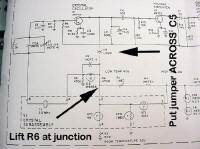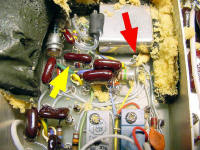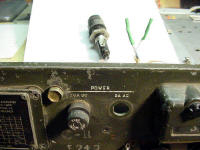
By Major Breckinridge S. Smith USAF (Retired)
E-Mail smithab11@comcast.net
Web Site:
http://home.comcast.net/~smithab11/
Please Note: Army Radio Sales Co. and this Article's authors are not responsible for any damages or personal injury whatsoever, that may occur as a result of information provided here. This Article is published in good faith and as far as we can tell accurate. Make sure you understand the instructions before starting. Modifications to military radio sets may invalidate the suppliers warranty and reduce the re-sale value of the radio.
| Variable Frequency Control For The PRC-47 |
| Overview: A simple mod requiring one 100K pot and 20 inches of wire. Anyone can accomplish this mod that has a soldering iron. This mod is stable and has been tested on several radios. Credit: Background: Terms Used: |
|
|
The mod consists of two changes in the circuit of the R.F. Oscillator module. All you have to do is to lift the end of a resistor (ARROW) and solder on a wire, and put a wire jumper across a small cap C-5 (ARROW) in the Oscillator module. By lifting the wire you are disconnecting the temperature compensation circuit for the crystal oscillator, you will then provide a voltage via a 100K pot mounted on the front panel of the radio to swing C-12 a crystal varicap. By soldering a wire across C-5, which is a "series" cap you are effectively removing it from the circuit and thus increasing the operating value of varicap C-12 making its value higher and more effective.
Target Module, last one in the right rear. Marking on the top is
Oscillator R.F. Unscrew the module retaining screws from the bottom of the
radio, remove the module and then remove the module cover, the cover slides
off. Take out the foam. Be sure and remove foam from the correct side.
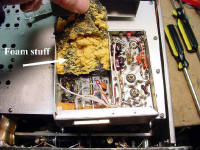 Remove The Foam, Correct Side |
|
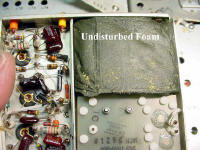 This Is The Wrong Side |
|
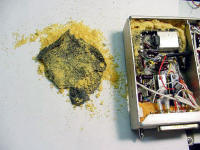 The Old Foam |
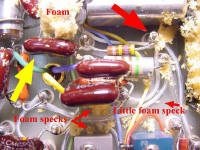 Un-Soldering The 470K Resistor |
|
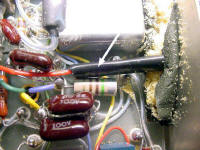 Covering The Resistor & Wire |
|
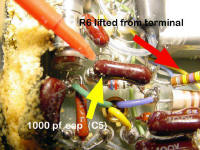 The Second Target |
See the picture of the connector J9 underneath the chassis showing the spare pins available. I choose pin four, the second pin over from the large connectors A2 and A3. It all ready has my Violet wire connected. This is a good choice to prevent shorting out the connection. This picture is for information only you will connect the pin later.
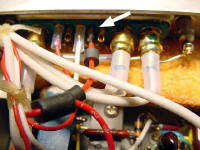 The Connector |
|
 Module Connector Diagram |
|
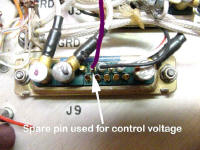 Connector J9 |
 Replace The Foam |
|
 Replacing The Cover |
|
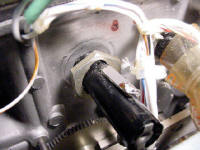 Removing The Fuse Holder |
 Connect 3 Wires To The Pot |
|
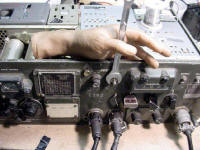 Install The Pot |
|
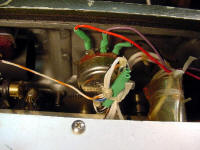 Rear Of The Pot |
Next target area. Top arrow points to the voltage distribution strip. The bottom arrow points to J-9 the oscillator chassis socket. Snake the wires from the pot down and behind the front panel, secure with a solder lug and cord or cable tie, and then run through the chassis grommet.
 Wire Strain Relief |
|
 Next Target Area, See Arrows |
|
 Snaking The Wires |
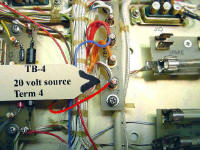 Connecting The Red Wire |
|
 Connecting The Centre Wire To J9 |
|
 Module Connector Diagram |
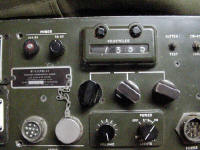 Knob Installed |
|
All there is to do is to install the knob. To check calibration and find the 12 o'clock or centre position for your pot tune in a time standard, I like CHU on 7335 Kcs. |
Visitors to this page since 03 January 2003
Back to Your Articles Index Page.
Army Radio Sales Co. Home Page.

